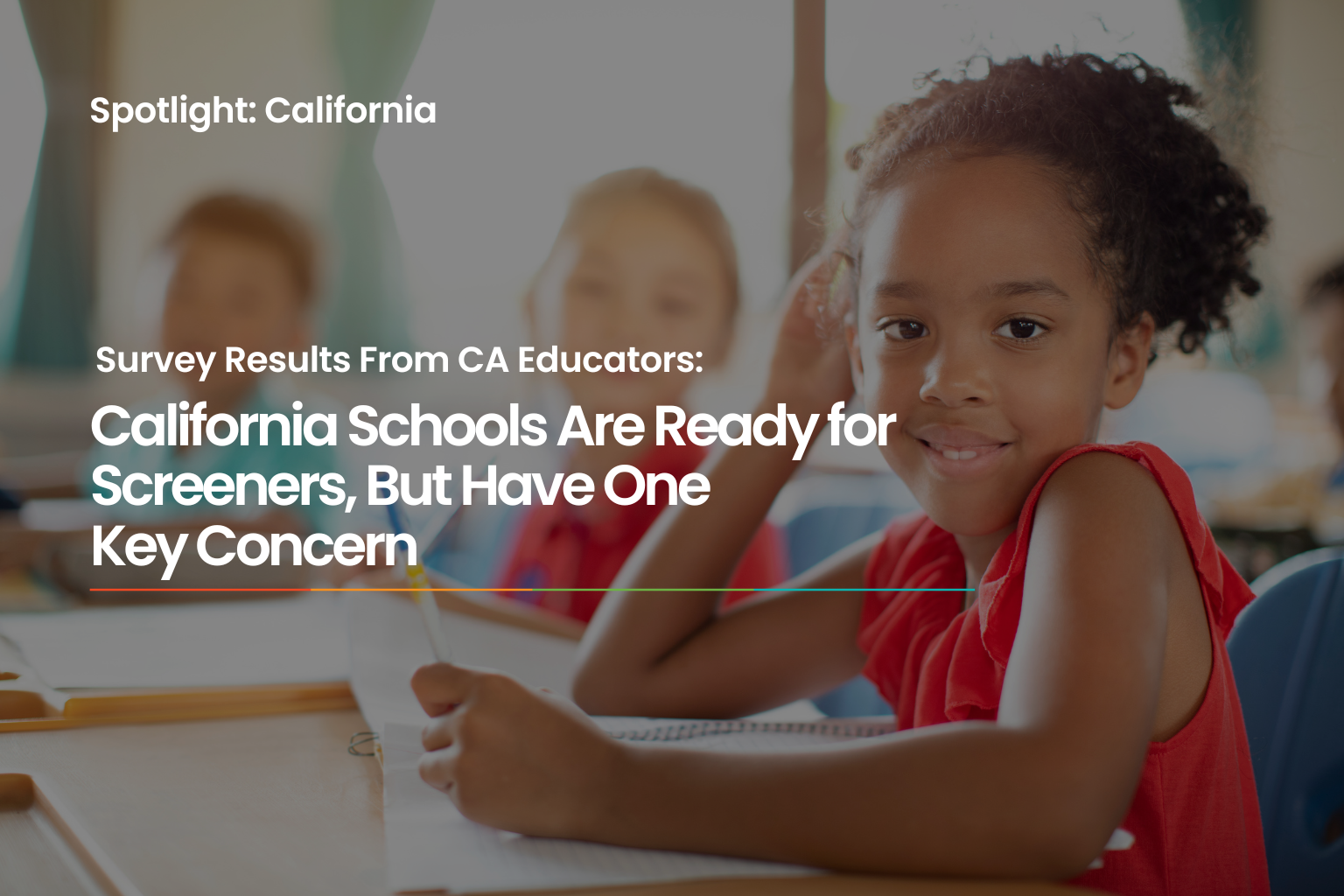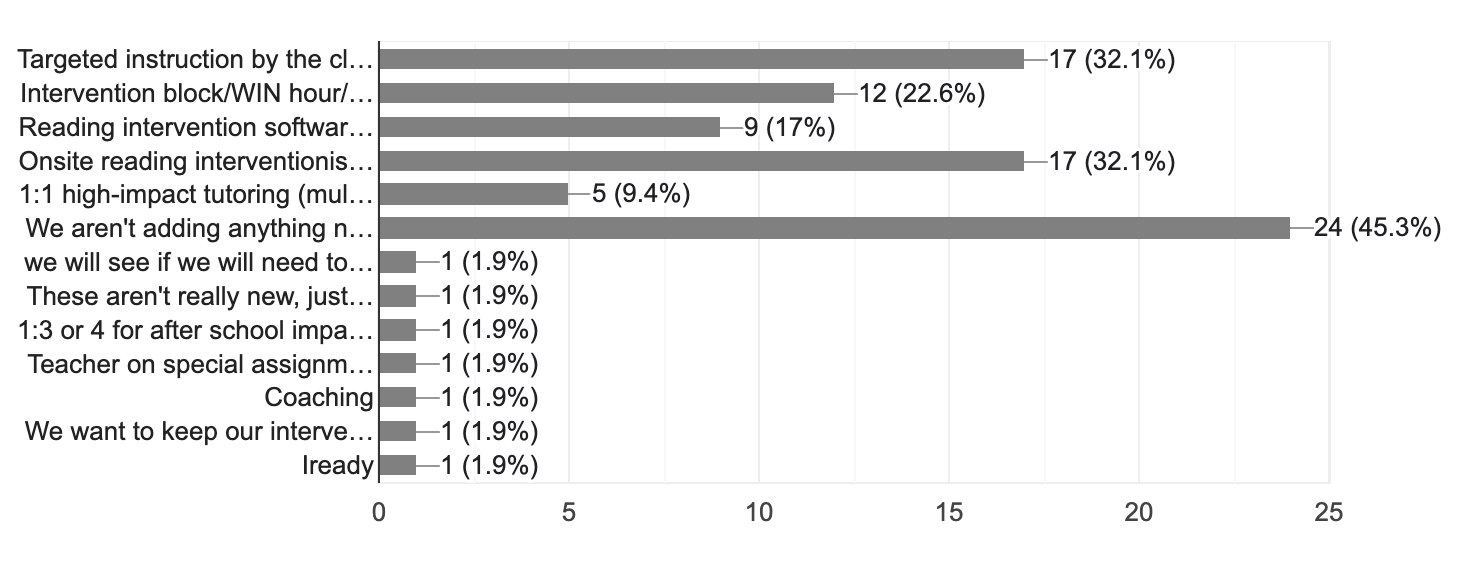As California rolls out universal reading screeners, a survey conducted by Hoot Reading with educators in the state explored schools’ readiness, current practices, and concerns.
Key Points
- 63.6% said their schools were implementing the K-2 screeners in the next school year (2025-26). The others had already started or hadn't chosen a screener yet.
- 50.9% expect to see an increase in students who are at risk for reading difficulties compared to prior years.
- A number (30.9%) of educators anticipated that their schools or districts would need to add new reading supports, including staff, to address the results of the screeners.
- Comments showed educators’ main concern: Screeners need sustained, targeted support to be truly useful.
Educator Predictions: Screeners Will Identify More Students for Intensive Intervention
The survey revealed that educators feel prepared and even excited to administer the screeners and analyze the data that comes back, adding a new layer of predictive data to inform their MTSS procedures.
“I'm looking forward to seeing what the data will show next school year and to creating a plan according to our students' needs.” - CA Educator
Of the educators who felt their schools should add new reading supports, there were varying ideas about what exactly was needed. About a third of the respondents felt that classroom teachers would need more training and resources, while the same number called for more specialized reading interventionists. Some felt that dedicated intervention time was the key to helping students with reading difficulties, while others pointed to high-impact tutoring to provide targeted support.
Educator Concerns: Funding and Investments in Structured Literacy Materials
While almost all the educators surveyed supported the implementation of early literacy screeners, what emerged in the comments were serious concerns about budgets and funding. Several felt that their schools would not be able to support the additional intervention needs revealed by the screeners.
“As a result of the screener, I think we will be identifying more students with reading difficulties. I thought this would mean a higher need for a reading interventionist but due to budget cuts, our school has decided to remove that position.” - CA Educator
The other big concern was the need for coherence between the universal reading screeners and existing ELA curricula. California’s school system gives local school districts control over their curriculum, raising concerns that opportunities for real impact would be missed without proper alignment. One educator said, “The absolute only thing we need to do is adopt a new ELA curriculum, but that is out of our hands at this point. I don’t know what our district timeline is for doing this.” Another pointed out that they felt their school was in a good position to meet students' needs, as they were changing their ELA curriculum at the same time as they were implementing the new screeners. Their hope was that the screeners would connect with the curriculum and intervention, leading to stronger coherence overall.
From Data to Impact: Making Screeners Count
California educators largely agree – universal reading screeners look promising. Results show wide support for their implementation, with some districts getting a head start in taking action to identify at-risk students. For a transformational impact in schools, students need sustained investment, aligned instructional materials, and systems that provide training and resources. As California enters this new phase, educators hope the screeners are just the beginning.
California Universal Screener Survey Results
We sent out a survey asking how prepared your school or district was for California’s universal reading screenings, and here are your results.
If you plan to add supports, what kind of additional instruction/intervention are you considering that’s not already in place? Check all that apply.
- 32.1% – Targeted instruction by the classroom teacher, providing them with additional training and materials
- 22.6% – Intervention block/WIN hour/Power Hour (dedicated intervention time across the campus)
- 17% – Reading intervention software/technology (please mention below which one(s))
- 32.1% – Onsite reading interventionists pulling students in groups
- 9.4% – 1:1 high-impact tutoring (multiple times/week with evidence-based instruction)
- 45.3% – We aren't adding anything new
- 13.3% – Other
Contact us for information on how Hoot Reading can help your school with 1:1 personalized literacy tutoring.

